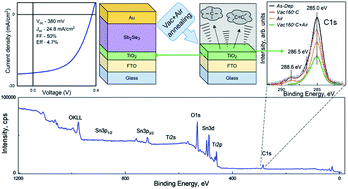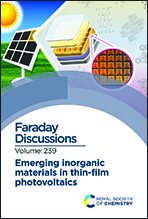A post-deposition annealing approach for organic residue control in TiO2 and its impact on Sb2Se3/TiO2 device performance
Abstract
We report a systematic investigation on the influence of two-step post-deposition treatments (PDTs) on TiO2 buffer layers deposited by ultrasonic spray pyrolysis (USP) for emerging Sb2Se3 photovoltaics. Air annealing is a typical method for recrystallizing chemically deposited TiO2 films. However, organic residues (such as carbon species) from a precursor solution based on titanium tetraisopropoxide and acetylacetone may still remain on the TiO2 surface, therefore requiring an additional annealing step. We demonstrate that vacuum annealing can be a suitable technological approach to decrease the concentration of carbon species in TiO2 films. Vacuum annealing was performed at temperatures at 160–450 °C prior to the 450 °C air annealing step. It was found that vacuum annealing at 160 °C followed by subsequent air annealing led to better device performance. This was explained by achieving an optimal balance between the removal of carbon content during vacuum annealing and the active recrystallization of TiO2 during air annealing. The decrease of carbon concentration by employing the two-step approach was supported by changes in the lattice parameters of TiO2 and proven by X-ray photoelectron spectroscopy (XPS). The given study provides experimental evidence on how nanoscale carbon species in the TiO2 heterojunction partner layer of a Sb2Se3 solar cell can affect the device’s performance. By this approach, we generate complementary insights on how the quality of the main interface has an impact and can take a key role despite the optimized Sb2Se3 grain structure and orientation.

- This article is part of the themed collection: Emerging inorganic materials in thin-film photovoltaics


 Please wait while we load your content...
Please wait while we load your content...